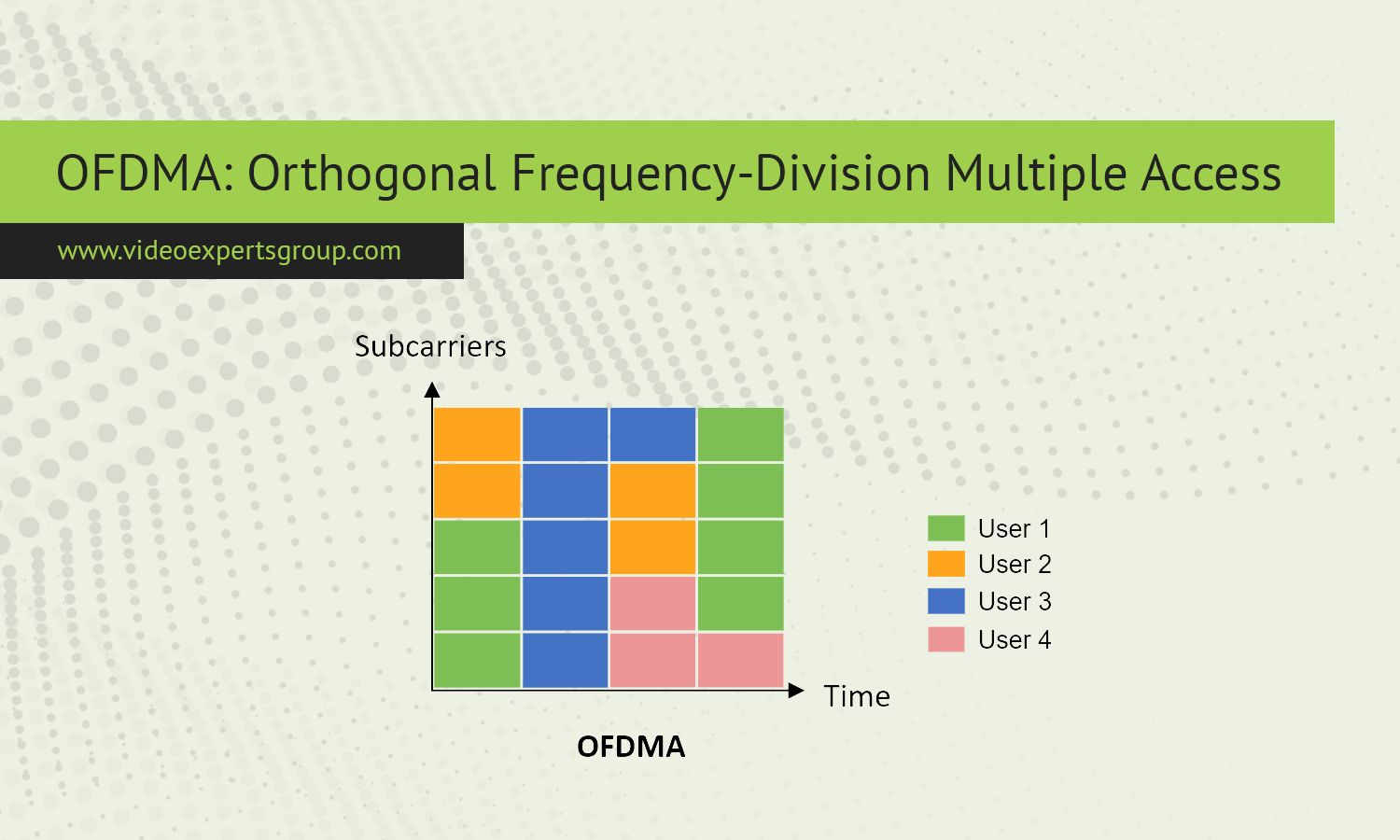Orthogonal Frequency-Division Multiple Access (OFDMA) is a key technology that has transformed wireless communication systems, including Wi-Fi and cellular networks. With the growing demand for faster and more efficient data transfer, OFDMA plays a crucial role in enhancing the capacity and performance of modern networks. This technology improves how multiple devices share the same spectrum, reducing congestion and improving overall user experience. Understanding OFDMA is essential for those working with or interested in wireless technology.
Meaning
OFDMA stands for Orthogonal Frequency-Division Multiple Access, and it is an advanced form of a technology called OFDM (Orthogonal Frequency-Division Multiplexing). OFDM divides a wide frequency band into smaller subcarriers, which are orthogonal to each other, meaning they do not interfere with one another. OFDMA builds on this by allowing these subcarriers to be assigned to multiple users at the same time. This means that a single frequency channel can be divided into smaller frequency slots that different users can utilize simultaneously.
In simpler terms, OFDMA helps distribute the available bandwidth more efficiently among multiple users. Instead of a single user occupying the entire channel, as with older technologies like Time Division Multiple Access (TDMA) or Frequency Division Multiple Access (FDMA), multiple users can access parts of the channel concurrently, increasing overall network efficiency.
Usage
OFDMA is widely used in various wireless communication systems due to its ability to enhance network performance and capacity. Key applications include:
-
Wi-Fi 6 (802.11ax): OFDMA is one of the critical innovations in Wi-Fi 6, where it improves the efficiency of data transfer in environments with multiple users, such as office buildings, homes, and public spaces. By allowing multiple devices to share the same channel, Wi-Fi 6 can handle more traffic without a significant drop in performance.
-
4G LTE and 5G Networks: In cellular communication, OFDMA is used in both 4G LTE and 5G to allow multiple users to connect to the same base station simultaneously. This increases the number of users a cell tower can support and reduces latency for data transmission.
-
IoT (Internet of Things): With a growing number of connected devices in IoT applications, OFDMA ensures that devices can transmit and receive data more efficiently without overloading the network.
-
Cable and Satellite Communications: OFDMA is also used in cable and satellite systems for efficient data transmission over limited bandwidth.
Advantages and Disadvantages
Advantages:
-
Efficient Use of Bandwidth: OFDMA allows multiple users to share the same frequency channel simultaneously, which improves bandwidth efficiency. This is especially useful in high-density environments where many devices are competing for the same spectrum.
-
Reduced Latency: By assigning subcarriers to different users based on their needs, OFDMA reduces waiting times for devices to send and receive data. This leads to lower latency, which is critical for real-time applications like video streaming and online gaming.
-
Better Performance in Crowded Environments: In areas with many devices, such as stadiums or airports, OFDMA can significantly improve performance by reducing congestion and allowing multiple devices to communicate simultaneously.
-
Flexible Resource Allocation: OFDMA can dynamically allocate resources based on user requirements. Devices that need more bandwidth for heavy data tasks (like video calls) can get more subcarriers, while devices that need less bandwidth (like sensors) are allocated fewer resources.
-
Improved Power Efficiency: By scheduling transmissions in an optimal way, OFDMA reduces the need for devices to stay active all the time, which can lead to energy savings, particularly for battery-powered devices like smartphones and IoT sensors.
Disadvantages:
-
Complex Implementation: OFDMA is more complicated to implement compared to older multiple-access techniques. The hardware and algorithms required for dividing and allocating subcarriers add complexity and cost to devices like routers and smartphones.
-
Sensitivity to Frequency Offset and Synchronization Errors: OFDMA relies on precise synchronization between devices. Any frequency offset or synchronization error can lead to interference between subcarriers, reducing the effectiveness of the technology.
-
Limited Support for Legacy Devices: Older devices that do not support OFDMA may not be able to benefit from the technology, which can lead to compatibility issues in mixed environments where both old and new devices are used.
-
High Computational Requirements: The dynamic allocation of subcarriers and management of users requires significant computational resources, especially in large networks with many users. This can increase the processing load on base stations and routers.
FAQ
OFDMA is a breakthrough in wireless communication, enabling more efficient use of bandwidth, improved performance in crowded environments, and lower latency. Its implementation in modern networks like Wi-Fi 6 and 5G demonstrates its importance in meeting the growing demand for high-speed, reliable data transmission. Despite some challenges in complexity and sensitivity to synchronization, the benefits of OFDMA make it a critical component of today's wireless technologies.
















